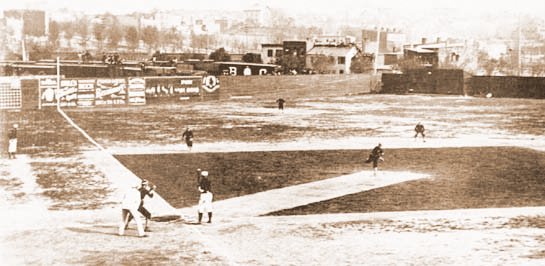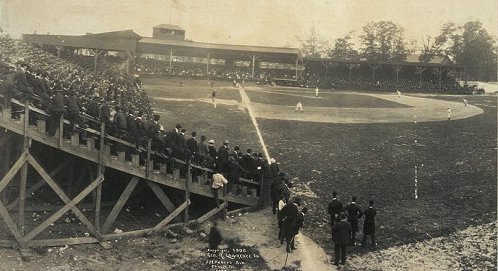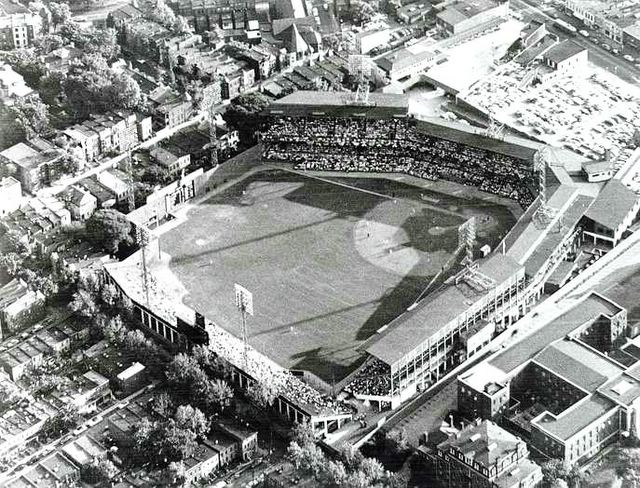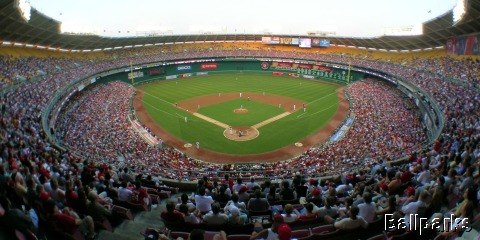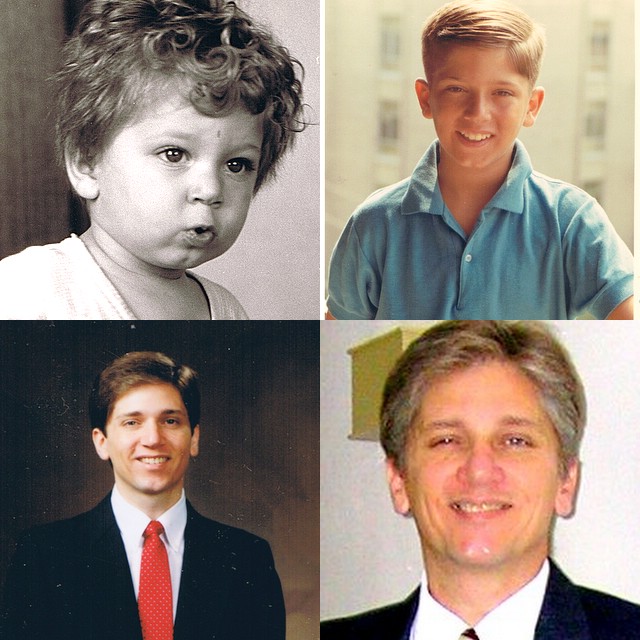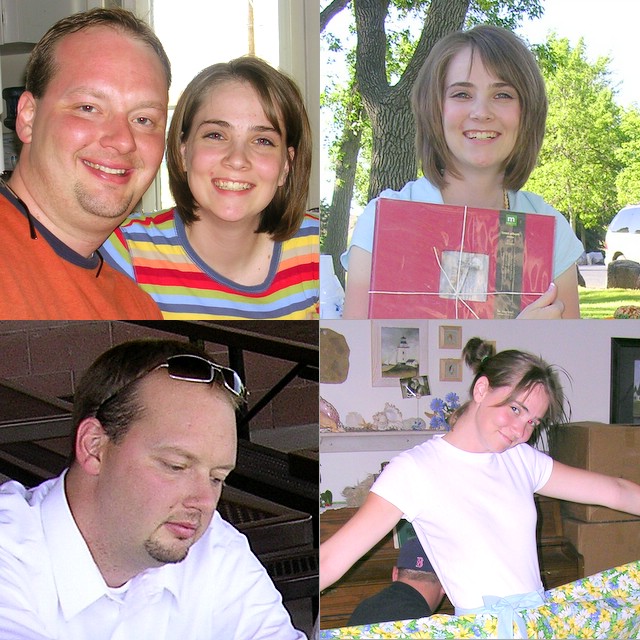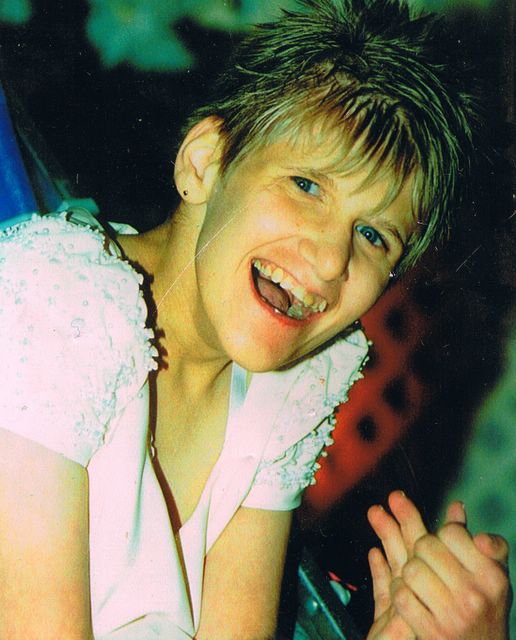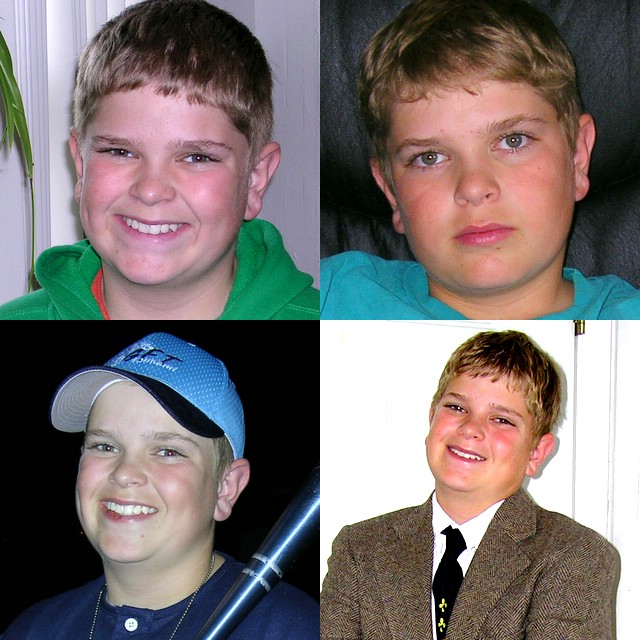The RFK Site Could Work
 [Dec. 31st] --I know, I know. The MLB suits have repeatedly said no to a new stadium at the RFK site, so they'd likely go into spasms at the thought of renovating our old circular, waffle-topped friend.
[Dec. 31st] --I know, I know. The MLB suits have repeatedly said no to a new stadium at the RFK site, so they'd likely go into spasms at the thought of renovating our old circular, waffle-topped friend.
But lets think this through a little bit.
Part of the problem between the city council and Bud Selig and MLB is that [for a variety of reasons] billion dollar decisions are being made too quickly, with many on both sides wary of both the process and the ultimate outcome of the stadium issue. The Anacostia site seemed to have been picked out of a hat as much as anything else. I seriously doubt that any demographic surveys were made of the region, with projections and cost comparisons helping to decide the outcome. The city has a stadium that is serviceable today, and could become a cornerstone for a "sports community" within the city. Why not renovate RFK and build around it a series of sports facilities that would bring thousands of Washington's athletic-minded citizens to its local nightly?
Riverfront Stadium, renamed Cinergy Field later in its life, was renovated and had its foot-print completed altered even though it was to be used for only two seasons before the Reds were to move into their new ballpark [granted, part of that major renovation was necessary to complete the Great American Ballpark being built next door]. Riverfront Stadium was the third of the "cookie-cutter" stadiums that were built using RFK as a basis for its design [Fulton County Stadium and Busch Stadium were the other two]. Riverfront was the first of the circular stadiums, however, to use artificial turf [and those gosh-awful sliding pits] instead of natural grass on its field. Everything about the stadium, from the color of the seats to its general construction, was b-0-r-i-n-g. Other than a fresh coat of paint and the occasional replacement of the turf, nothing much changed until 2001. The footprint of the new Great American Ballpark overlapped the outfield stands of Riverfront Stadium, and had to be removed to complete the new park. Following the end of the 2000 season, workman removed the outfield sections of the stadium, replaced the astro-turf with real grass, and gave the park a fresh coat of paint.
 In just six months, the new Cinergy Field was ready for baseball.
In just six months, the new Cinergy Field was ready for baseball.
I saw that first game on TV. I was still a Braves' fan then, and never missed an Atlanta game on TBS. I was stunned by the beauty of the new design of the old lady. It seemed to be a great place to watch a baseball game. Thanks to the Bengals' new stadium just down the road, Cinergy was no longer "multi-purpose." Oh, parts of it looked a little like Shea, and there was still more work to be done, but there was nothing about the facility that was a "negative" in any way. After two short seasons, the stadium was razed in favor of parking for the new park.
So, why not do the same at RFK? Rip out three-quarters of the outfield stands and supporting walls. Remove the vertical-beam facade from the stadium's exterior and replace it with glass. Build a square, supporting structure around the facility that would house the amenities that today's RFK doesn't have room for. The resulting 38,000 seat stadium, while not a gem, would be a jewel nonetheless.
 On the surrounding land, a large, fan friendly mini-city could be built. Sports bars, fine restaurants, gyms and other athletics-based enterprises could easily turn the black top and tumbleweed appearance of the surrounding area into a place "to see and be seen." A soccer stadium could be built next to RFK to house DC United. The Armory could possibly be renovated and house a box-lacrosse team. The opportunities are endless.
On the surrounding land, a large, fan friendly mini-city could be built. Sports bars, fine restaurants, gyms and other athletics-based enterprises could easily turn the black top and tumbleweed appearance of the surrounding area into a place "to see and be seen." A soccer stadium could be built next to RFK to house DC United. The Armory could possibly be renovated and house a box-lacrosse team. The opportunities are endless.
The "new" RFK could be given a definitive life span, say ten years or so. During that time, the team's new owners, Major League Baseball and the D.C. City Council could all work together, patiently and cautiously, to design and build the "state-of-the-art" facility that everyone is dreaming about today But will never happen today. As the cost overruns continue to mount, our "grandiose" facility will be chipped at and chipped at until, when all is said and done, the park will be a simple structure with little more than seats, toilets and grass.
RFK could give us ten more years, and the cost of renovating the old gal could probably be recouped by building the new stadium in a way that will make sense, cost less and be in the right location. I know it'll never happen, but then they said that Alfonso Soriano would never play in the outfield.
Oh, shoot.
Due To Technical Difficulties Beyond Our Control ...
 [December 31st] -- In this world of changing technologies, one thing remains constant: the substandard service of the phone company. We lost our DSL yesterday morning, and, after spending two hours with the phone cops, we found the problem, and were assured that we'd have the internet up and going within 24 hours. Come the 25th hour, however, still no internet. I called them again and got this answer: "Whoops. We're sorry. Their is no way we could get it up and going that quickly. You're looking at January 5th."
[December 31st] -- In this world of changing technologies, one thing remains constant: the substandard service of the phone company. We lost our DSL yesterday morning, and, after spending two hours with the phone cops, we found the problem, and were assured that we'd have the internet up and going within 24 hours. Come the 25th hour, however, still no internet. I called them again and got this answer: "Whoops. We're sorry. Their is no way we could get it up and going that quickly. You're looking at January 5th."
 After a 15 minute "discussion" with a supervisor, the date stood. January 5th.
After a 15 minute "discussion" with a supervisor, the date stood. January 5th.
Phone jerks.
Everything else in this world is instant; push a button and it happens. Not with the phone company though. They are still living in the 1950's. They probably still have fins on their cars and bomb shelters in their back yards.
So, for the next few days, I'll be using the dial-up modem and my university account until I get the DSL back. Man, I forgot how slow dial-up is. The graphics may be reduced for a few days to speed things up, but rest assured, I'll be here.
Bowden Signs Quantity, Not Quality
 [December 29th] -- Call it, "Two for the price of one." Jim Bowden added the final two pieces of the Washington Nationals' pitching puzzle by signing former Red Ramon Ortiz and resigning Tony Armas Jr. Ortiz signed a one-year, $2.5 million dollar contract and Armas Jr. inked a one-year, $2.1 million dollar deal, the same amount he made in 2003 and 2004, and down a bit from last season's $2.4 million dollar salary.
[December 29th] -- Call it, "Two for the price of one." Jim Bowden added the final two pieces of the Washington Nationals' pitching puzzle by signing former Red Ramon Ortiz and resigning Tony Armas Jr. Ortiz signed a one-year, $2.5 million dollar contract and Armas Jr. inked a one-year, $2.1 million dollar deal, the same amount he made in 2003 and 2004, and down a bit from last season's $2.4 million dollar salary.
Let's dissect both deals.
Ramon Ortiz - Age: 32 - Career Record: 68-60, 4.72 Of all of the "bargain-basement" pitchers remaining in the free agent market, Ortiz was my personal favorite. There has been a constant throughout his seven-year major league career: He wins a lot of games and he does it with an very high ERA. Check this out: 2001] 13 wins, 4.36 ERA --- 2002] 15 wins, 3.77 ERA --- 2003] 16 wins, 5.20 ERA --- 2004] 5 wins, 4.43 ERA --- 2005] 9 wins, 4.7 2 ERA. Being an American League pitcher for most of his career adds three-quarters of a run to his ERA, giving Ortiz a pretty good 3.97 adjusted NL ERA.
2 ERA. Being an American League pitcher for most of his career adds three-quarters of a run to his ERA, giving Ortiz a pretty good 3.97 adjusted NL ERA.
True, he had a 4.72 ERA with the Reds last season, but it was his first year in a new league, and in a very hitter friendly park. Balls that were flying out of Anaheim and Cincinnati should die on the warning track at RFK. He pitched very well away from the Reds' band-box. He had a 1.50 ERA at Dodger Stadium, 2.51 at Shea, 2.35 at Turner Field and 3.00 at PNC in Pittsburgh. Look at his Turner Field number closely, as Atlanta's ballpark is almost as pitcher friendly as RFK. Don't be surprised if on the back of his jersey, right above the number, the name "Loaiza II" appears next season. Loaiza has a career ERA in the American League of 4.64, but went 12-10, 3.77 with the Nationals last season. If Ortiz has the same type of improvement, look for him to win 12-14 games with an ERA of 3.80 or so.
Ortiz is relatively short for a pitcher, which causes his release point to throw a very straight fastball. Taller guys, guys like John Patterson and Randy Johnson, throw down at batters, making their heaters seem especially formidable. Although straight, his fastball is fast, crossing the plate at 95+ mph consistently. However, his set-up pitches are mediocre at best, giving hitters the opportunity to wait on his fastball. If they guess right, the ball goes very, very far.
Ortiz has a career winning percentage of .538 with an NL adjusted ERA of 3.98. He's making $2.5 million with the Nationals. Mr. "All Everything," Kevin Millwood, has a career winning percent of .569 with an ERA of 3.76. He's making $12 million a year. Is Kevin Millwood better than Ramon Ortiz? You bet he is. Is he better to the tune of nearly $10 million per season? You be the judge. I can tell you where the Rangers got the money to pay him. They traded Alfonso Soriano to the Nationals. Thanks.
Tony Armas Jr. - Age: 27 - Career Record: 39-48, 4.32 Tony Armas Jr. didn't resign with the Nationals because of any great sense of loyalty to the club. No other team except the Colorado Rockies were willing to offer him a contract, and if you had to sign a one-year contract in hopes of earning a multi-year, major dollars deal down the road, would you sign with Colorado or Washington?
It's a no brainer from my perspective.
For yet another season, Armas was injured. In 2005, he didn't even make it out of the dressing room before landing on the disabled list. He will go into spring training in competition with Ryan Drese to fill the 5th slot in the rotation. My money goes on Armas. He's dang mad that no one wanted him this free-agency season. He wants to prove the baseball world wrong, and he wants to sign a Loaiza-type contract in 2007. The only way to do that is to stay healthy and win 14 games next season. And he just may.
free-agency season. He wants to prove the baseball world wrong, and he wants to sign a Loaiza-type contract in 2007. The only way to do that is to stay healthy and win 14 games next season. And he just may.
The scouting reports on Armas are uniform in that they all indicate a tremendous talent with outstanding mound "presence." He knows how to pitch and what to pitch. He just can't stay healthy. The TSN scouting report believes that Armas will be a consistent 15 game winner in his career once he gets over the injury bug-a-boo. And they very well could be right. Of course, it'll never happen with the Nationals. The best we can hope for is a great bon-voyage year in 2006.
Here's the [likely] starting rotation in 2006:
1-Livan Hernandez, 15-10 - 3.98
2-John Patterson, 9-7 - 3.13
3-Brian Lawrence, 7-15 - 4.83
4-Ramon Ortiz, 9-11 - 5.36
5- Ryan Drese or Tony Armas Jr. [Numbers for both to scary to list here]
All in all, it's a rotation that I can live with. Livan and Patterson, Drese and Armas Jr. remain from 2005. Ramon Ortiz should produce numbers similar to the departed Esteban Loiaza. Lawrence is a plus over the conglomeration of Sunny Kim, Hector Carrasco, Claudio Vargas, Zach Day and Tomo Ohka. They certainly have the potential to repeat the 81 win season that the previous starting staff crafted last year. But the offense should be better, so 2006 should be a better season for the Nationals.
RAMON ORTIZ SIGNS WITH NATS

NL East Preview: FIRST BASE
 [December 27th] -- The Beltway Boys begins it's position-by-position preview of the National League East. We start with first base.
[December 27th] -- The Beltway Boys begins it's position-by-position preview of the National League East. We start with first base.
The same five players who ended the 2005 season at first return for 2006. Two of them, however, Carlos Delgado and Mike Jacobs, have traded teams.
#1 - Carlos Delgado [Mets]: .301-33-115 Delgado joins his third team in three years, with each move money related. He left the Blue Jays for more money, and the Marlins traded him to New York because he made too much money.
Everything about Delgado was huge last season. He had a .399 on-base percent and a .582 slugging average. That said, Delgado's skills are in a slow but obvious decline. His power production the last two seasons is down an average of seven home runs and seventeen rbi's from his glory days of 1998 through 2003. Don't misunderstand though; he's still the best first baseman in the division.
Delgado's power is to all fields and isn't limited to upper-deck shots. He has tremendous gap power and his smarts on the basepaths make up for his typical first-base speed. The only negative offensively is a [relatively] high strikeout total, though not when you compare him to Brad Wilkerson or Alfonso Soriano.
Defensively, he's a liability. Last season, Delgado committed 14 errors and crafted a .989 fielding percent. The Nationals Nick Johnson, by comparison, only made 5 miscues and had a .996 fielding average.
The Mets mortgaged their future to try to win NOW, and Delgado can do just that. But Mike Jacobs will be in the league long after Delgado retires, and the trade that brought him to New York won't look so rosy when Jacobs begins to pile up MVP awards in Florida (or whatever city the Marlins relocate to) as Delgado piles on the pounds.
That said, he's still the top dog in this hunt. For now.
#2 - Ryan Howard [Phillies]: .288-22-63 Ryan Howard is proof that every amateur draft choice counts; he is a former 4th round pick. Howard reached Philadelphia last season thanks to Jim Thome's mid-season injury. He hit a combined MLB/AAA .321-38-117.
Howard is a lefty pull hitter who plays in a band-box. He should hit 30 homers a season in Philadelphia just by throwing his bat on the field each night. But he's more than just an undisciplined slugger. His high strikeout rate (166 in 2005) comes from Howard's inexperience as much as it does a lack of plate discipline. Even with all the strikeouts, he still had a minor league career .397 on base percentage. Defensively, he's one of the best in the division, just a tinch behind Nick Johnson.
throwing his bat on the field each night. But he's more than just an undisciplined slugger. His high strikeout rate (166 in 2005) comes from Howard's inexperience as much as it does a lack of plate discipline. Even with all the strikeouts, he still had a minor league career .397 on base percentage. Defensively, he's one of the best in the division, just a tinch behind Nick Johnson.
Howard is only one good season away from supplanting Delgado as the top first baseman in the division.
If he continues to mature, and continues to play in Philadelphia, he could end his career with 500+ home runs. Howard is 26 and his talent and maturity level is more about stability than getting better and improving each season. He's a gem. That's for sure.
#3 - Nick Johnson [Nationals]: .289-15-74 If only he could remain healthy for a full season. The New York Yankees believed that Johnson was going to be their first baseman of the future. So did the Expos. So do the Nationals. But the guy just can't stay healthy. When he does, he's a superb piece of the puzzle. Oh sure, he'll never slug 40 homers like Delgado, but he's a complete, all-around player who does so many things well. How good can he be if he's able to play every day? No one knows, because he's never done it. We can guess, though. Over his 500+ game minor league career, he averaged a homer every 25 at bats and an rbi every 5.5 at bats. He had a .402 obp and a .445 slugging average.
Over his 500+ game minor league career, he averaged a homer every 25 at bats and an rbi every 5.5 at bats. He had a .402 obp and a .445 slugging average.
Playing in the majors, Johnson has averaged a homer every 27 at bats and an rbi every 6.1 at bats. He's crafted a .383 obp and a .437 slugging percent. Major leagues or minor leagues; his production remains constant. If Johnson were to get 550 at bats in 2006, his numbers would look something like this: .285 - 21 - 92. He'd whack 32 doubles and duplicate his .383 obp and 437 slugging. And, as mentioned previously, Johnson is the best fielding first baseman in the division. He can drive in runs, he can prevent runs from scoring; he can hit right-handers and left-handers alike. He can do everything. Except stay healthy.
2006 is a "do or die" year for Nick. If he remains healthy and produces, he very well could find himself with a long-term deal. If he misses a significant number of games yet again, however, look for him to end up with an American League club and a career as a designated hitter.
#4 - Mike Jacobs [Marlins]: .310-11-23 Jacobs did a lot of damage in only 100 at bats with the Mets in 2005. Projected over a full season, Jacobs would have produced in the area of .310-55-120. Jacobs  is young and his lefty swing is ideal for Dolphins Stadium (or whatever they're calling it these days). He has a minor league career obp in the .365 range, and his slugging average is above reproach. The fact that he plays both catcher and first is indicative of just how slow the guy is. Defensively, Jacobs is adequate.
is young and his lefty swing is ideal for Dolphins Stadium (or whatever they're calling it these days). He has a minor league career obp in the .365 range, and his slugging average is above reproach. The fact that he plays both catcher and first is indicative of just how slow the guy is. Defensively, Jacobs is adequate.
Barely. He usually makes the plays on the balls he gets to, although his range is somewhat limited. He had a .984 fielding average in 2005, only fourth best in the division.
If the National League pitchers can find a hole or two in his swing this time around, Jacobs is in trouble. But I tend to think that his phenomenal 2005 numbers are not an aberration. Jacobs is the real deal.
#5 - Adam LaRoche [Braves]: .259-20-78 LaRoche, the son of former pitcher Dave LaRoche, isn't at the point in his career where he'll suddenly "get it" and become a stud at first. His stats from his first two years in the major leagues are remarkably consistent. He's not learning and getting better but rather continues at his currently level. And that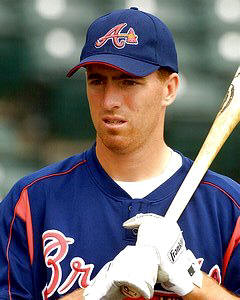 aint bad, but it aint good either. LaRoche is a gap hitter with some home run power, but not nearly enough for the position he plays. He has averaged one homer per 27 at bats during his short stay in the bigs, which is the same as Nick Johnson. But Johnson has an obp 65 points higher than LaRoche, and can hit both lefties and righties with ease.
aint bad, but it aint good either. LaRoche is a gap hitter with some home run power, but not nearly enough for the position he plays. He has averaged one homer per 27 at bats during his short stay in the bigs, which is the same as Nick Johnson. But Johnson has an obp 65 points higher than LaRoche, and can hit both lefties and righties with ease.
LaRoche hits left handers so poorly that a 48 year old former shortstop has had to cover for him when southpaws were on the mound. Defensively, he's a middle-of-the-pack kind of guy. He's good enough to play in the major leagues, but certainly can't change the outcome of a game with his glove.
It's doubtful that LaRoche is the Braves' long-term answer at first base, that is unless the team can find another credible platoon partner. If Atlanta can continue to surround him with superior players, they might be able to afford to go to war with Adam LaRoche loping around the bag, shooting gappers to the wall and hitting the occasional tater over the fence. Regardless, he's still the worst in the division.
Vidro Kneeds A Healthy 2006 Season
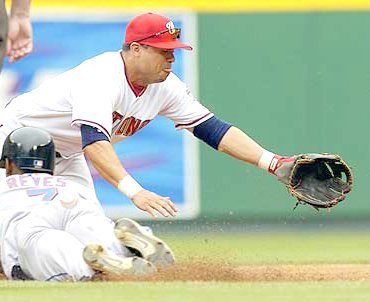 [December 27th] -- Jose Vidro has begun his annual "My knee is feeling much better" campaign. Just like last season, when the diminutive second baseman assured the Nats' Nation that surgery had "once and for all" repaired his gimpy knee, Vidro is again touting the stability of his leg joint. "My knee is feeling really good. I've been working out very hard. I'm very happy the way things are going," Vidro said. "We are almost two months away from spring training and it's going to be fun for me next year. I'm glad that I didn't have surgery. I haven't had problems in back-to-back days."
[December 27th] -- Jose Vidro has begun his annual "My knee is feeling much better" campaign. Just like last season, when the diminutive second baseman assured the Nats' Nation that surgery had "once and for all" repaired his gimpy knee, Vidro is again touting the stability of his leg joint. "My knee is feeling really good. I've been working out very hard. I'm very happy the way things are going," Vidro said. "We are almost two months away from spring training and it's going to be fun for me next year. I'm glad that I didn't have surgery. I haven't had problems in back-to-back days."
Although team doctors recommendeded another surgery to repair his knee, Vidro sought additional outside opinions. A Miami doctor insisted that rest followed by a regimen of exercise and aerobics was the answer. Vidro chose the latter option. It's hard to tell at this stage if Vidro's statement to rotoworld.com is the answer to what ails him or just wishful thinking.
Vidro was one of the top second baseman in the National League and was producing hall-of-fame type numbers until a 2003 knee injury derailed his career. Unlike most major league all-stars, Vidro spent six seasons toiling in the minor leagues before getting "the call" in 1997, crafting a mostly mundane .273 career average with no indication of the greatness to come.
His first two seasons with the Expos were, to put it mildly, terrible. Vidro hit a combined .230 in 1997 and 1998 and was unable to push the incumbent Mike Lansing out of the lineup. From 1999 through 2002, however, he blossomed into a true star, averaging .317-18-78 over those four seasons.
 The 2003 season was just as good, hitting .310-15-65 until going down with his first knee injury late in the season. His production, though still superb for a second baseman, was down significantly the next season as he battled lingering knee pain all year. He played in only 104 games in 2004 before finally being shut down and undergoing orthoscopic surgery. He was batting .294-14-60 at the time.
The 2003 season was just as good, hitting .310-15-65 until going down with his first knee injury late in the season. His production, though still superb for a second baseman, was down significantly the next season as he battled lingering knee pain all year. He played in only 104 games in 2004 before finally being shut down and undergoing orthoscopic surgery. He was batting .294-14-60 at the time.
I'm sure all of us believed the remarks of Jose Vidro, general manager Jim Bowden and skipper Frank Robinson prior to the start of the 2005 season. He was fine. He was healthy. He was ready.
From opening day, it was obvious that Jose Vidro wasn't any of those. He hobbled when he ran. Heck, he hobbled when he walked. He probably hobbled when he kissed his wife. But as professionals are want to do, he played through the pain and contributed. It was only a matter of time, however, before something had to happen.
And it did.
I was watching the game against the Dodgers when Vidro was hurt. He sprinted from first on a drive down the line and running full speed, stepped on third as he headed home, rolling his ankle. Because his knee still wasn't healthy, he was favoring his bad leg as he rounded the bases, causing him to step awkwardly on the bag. He was never the same. Although he returned later in the season, he was a shell of his former self, batting only .275-7-32 in only 309 at bats, well below his career average of more than 540 plate appearances per season. even worse, Jim Bowden traded the team's number-four starter for Junior Spivey, only to lose him to injury a month later.
Now what? What would happen if Vidro was healthy and produced that "typical" season of .317-18-78 in the number two hole in the lineup? Plenty. Jose Guillen, Nick Johnson and Ryan Zimmerman would see a marked increase in rbi's in 2006. As Jose Vidro goes, so goes the Nationals' offense. Just look at what happened last year.
Vidro is only 31, just two years older than newly acquired Alfonso Soriano. This past season, at the age of 37, second baseman Jeff Kent hit .289-29-105 for the Dodgers. There is no reason that a healthy Vidro couldn't contribute for another six years for the Nationals. But knees are tricky things. Some say that Mickey Mantle was the fastest man ever to play the game of baseball. Joe DiMaggio, watching Mantle play centerfield during his last season of 1951, turned to Casey Stengel and said, "If he stays healthy, he could be the greatest ever to wear a Yankee uniform." He didn't stay healthy. He irrevocably damaged his knee that same season, catching his spikes on a sprinkler head in the outfield at Yankee Stadium during the World Series. He played almost his entire career on one good leg. Imagine what he might have done if he had a good set of wheels.
If I had to guess, Vidro will come back and return to his all-star form. If he does, the Nationals' will have a solid 2-3-4-5 middle of the order, and they will have a chance for success in 2006. If, however, Vidro is just blowing smoke again, look for next season to be incredibly l-o-n-g.
The Day After: Back To Business [Almost]
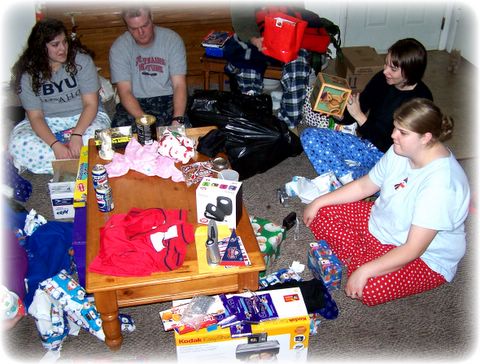 [December 26th] -- For me, the day after Christmas is always the saddest. People no longer feel obliged to be nice, and it's another year before the next "big haul."
[December 26th] -- For me, the day after Christmas is always the saddest. People no longer feel obliged to be nice, and it's another year before the next "big haul."
Oh well.
Santa brought me a new top-of-the-line digital camera, an XM "Roady 2" for my car and the XM "xm2go" receiver. The "Roady 2" is going to stay in my truck full time. Now, when I go to school each morning, I can listen to the MLB Home Plate while wiping the snow off my windshield. The "xm2go" is unbelievable. It works in the car, at home, or as a portable walkman. It records 5 hours of airtime, so I can go into class and record what I'd normally miss. I also got a really cool back massager, a  new alarm clock that displays the time on the ceiling, and a white-on-white Nationals cap. All in all, a great Christmas.
new alarm clock that displays the time on the ceiling, and a white-on-white Nationals cap. All in all, a great Christmas.
No blogging for the rest of the day.
My family [10 of us in 3 cars] are heading down to Salt Lake City for some relaxation and shopping. My kids like going to the "big city." To them, a city of half a million is h-u-g-e!.
 I've got to get them back to D.C. before I graduate.
I've got to get them back to D.C. before I graduate.
Hope all of you had a great Christmas. I'd love it if you'd leave a comment and tell me what Santa brought you for Christmas.
Best Wishes,
Farid
Encarnacion Signs With Red Birds
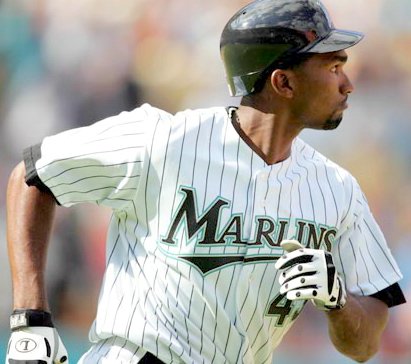 [December 26th] -- For a few days last spring, perhaps it was a matter of only a few hours, Juan Encarnacion was a Washington National. You didn't know about it, of course. Neither did I. But the behind-the-scenes negotiations were over, and all that was left was the cursory physical. Then it could be announced:
[December 26th] -- For a few days last spring, perhaps it was a matter of only a few hours, Juan Encarnacion was a Washington National. You didn't know about it, of course. Neither did I. But the behind-the-scenes negotiations were over, and all that was left was the cursory physical. Then it could be announced:
"The Washington Nationals announced on Thursday that they have acquired Marlins' outfielder Juan Encarnacion in exchange for starting pitcher Zach Day."
It was a good deal. The Nationals were acquiring a player with a high ceiling but as yet untapped potential. He's played for four teams in nine seasons; the Tigers, Reds, Dodgers and Marlins twice have given up on him. In return, the Marlins were getting Zach Day, another player with superb talent but sub-par statistics.
Both players were packing their boxers and baseballs, ready to join their new teams. Then a funny thing happened. Day didn't pass his physical. Seems the huffy hurler had been pitching for quite some time with a broken bone in his left hand, the Marlins didn't think that was fair, trading a healthy player for a broken one. Encarnacion stayed with the Marlins and Day was traded later in the season for a plan "B" player who turned out to be the under-performer of the year: Preston Wilson.
 Today, Wilson is looking for a job, Day is the #5 starter for the Rockies, and Encarnacion is the newest member of the St. Louis Cardinals. He signed a 3 year deal that will average $5 million per season.
Today, Wilson is looking for a job, Day is the #5 starter for the Rockies, and Encarnacion is the newest member of the St. Louis Cardinals. He signed a 3 year deal that will average $5 million per season.
Encarnacion had a good season in 2005, going .276-16-76. He seems to be maturing as a hitter and has always been a quality defender. Yet he signed for "only" $5 million per year, and was one of the last "name" free agents to sign. The Nationals still had enough in the purse to sign Encarnacion -- Ryan Church could then be traded for pitching. I'm surprised Bowden didn't try. Of course, perhaps he did.
Alas, here's one of Jim Bowen former players who didn't sign with Washington. And that's too bad. The team could have signed him for a fair-value contract and at a fair length too. If the team is still intent on trading Church, then Eric Byrnes (2005 with Oakland-Colorado-Baltimore), the recently non-tendered semi-slugger would make a nice second choice.
Nats Get Mike Stanton For Christmas, I Get A New Digital Camera
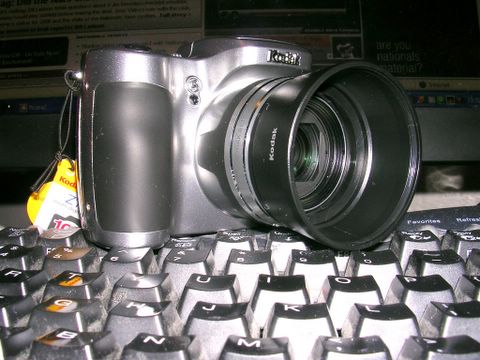 [December 25th] --Well, it's [very] early on Christmas morning -- so early that I haven't yet gone to bed. My wife and I have been "prepping" for Santa's visit. And if my kids [ages 14 to 24] believe that, I didn't do a very good job of raising them.
[December 25th] --Well, it's [very] early on Christmas morning -- so early that I haven't yet gone to bed. My wife and I have been "prepping" for Santa's visit. And if my kids [ages 14 to 24] believe that, I didn't do a very good job of raising them.
Each family member gets to open one gift on Christmas Eve -- they're usually not much -- jammies, perfume, like that. But all my kids seemed particularly excited, which surprised me. The "good stuff" comes Christmas morning.
Turns out they all knew what I was getting, a new, more advanced digital camera. I was blown away when I opened the package.
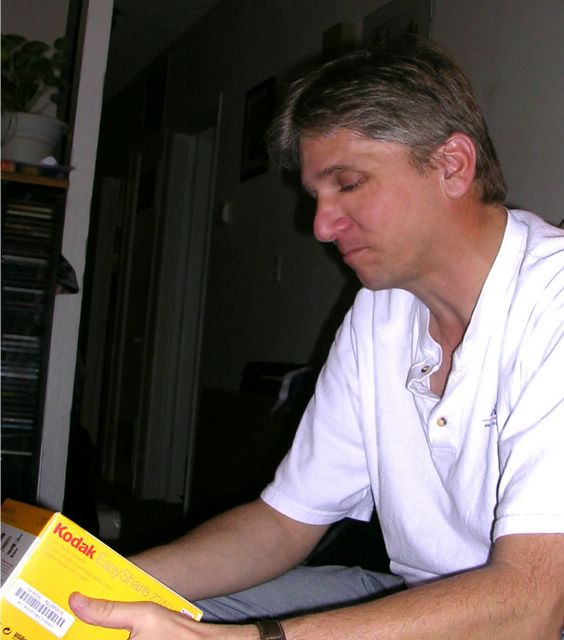 I have been a professional photographer for most of my life, but changed gears with the advent of digital photography. You didn't need an artist behind the lens anymore to get a great photo. The Nikon digital I now have is great, but it's a point-n-shoot. This new one has all the manual capabilities that my SLR's have. Man, I'm stoked.
I have been a professional photographer for most of my life, but changed gears with the advent of digital photography. You didn't need an artist behind the lens anymore to get a great photo. The Nikon digital I now have is great, but it's a point-n-shoot. This new one has all the manual capabilities that my SLR's have. Man, I'm stoked.
On a baseball note, the Nationals signed, er, re-signed ... signed again; heck, Mike Stanton is a Nat once more. He says he enjoyed playing for Frank last season, and wanted to remain near his kids somewhere on the east coast. Good for you, Mike. Welcome back. Stanton went 2-1, 3.58 last season with Washington. He signed a one year, $1 million dollar contract.
Good move, Jimbo. At least our bench and bullpen are first rate.
Merry Christmas to all. I'll post a bit later today when my wife takes her annual Christmas sleep-the-rest-of-the-day nap.
You're Not Going To Believe This ....
 [December 24th] -- The St. Louis Cardinals are reporting this morning that Junior Spivey has signed a one year contract to play with the club for the 2006 season. In their press release, team officials say that they have "had an interest" in Spivey for "two or three years" and that he will be given every opportunity to earn the starting second baseman's job in spring training.
[December 24th] -- The St. Louis Cardinals are reporting this morning that Junior Spivey has signed a one year contract to play with the club for the 2006 season. In their press release, team officials say that they have "had an interest" in Spivey for "two or three years" and that he will be given every opportunity to earn the starting second baseman's job in spring training.
 Spivey will battle former Nationals' infielder Deivi Cruz [and a minor leaguer] for the starting position.
Spivey will battle former Nationals' infielder Deivi Cruz [and a minor leaguer] for the starting position.
Huh?
Both Cruz and Spivey weren't "good enough" to remain with an 81 win cellar-dweller, but they're both good enough to end up as the top two second baseman for the Cardinals, a team that's won 100 games the last two seasons.
Second base. Second base. Aaaaaaaahhh. Years from now, this will be known as the Soriano curse ofthe damned.
Happy Holidays From The Ghosts Of Christmas Past
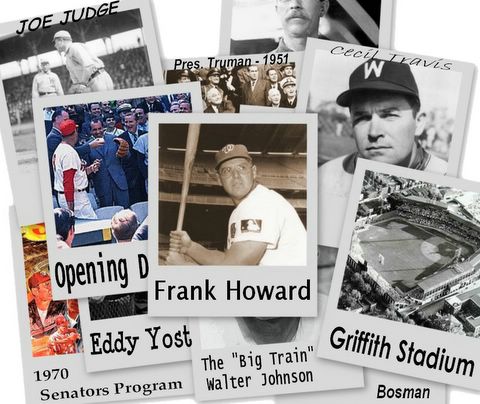 [Dec. 23]- Tis the season to be thankful. And I am. Very, very thankful. I am grateful that in spite of the stupidity and selfishness from all sides concerned, baseball has returned to Washington. I remember when I wasn't so thankful.
[Dec. 23]- Tis the season to be thankful. And I am. Very, very thankful. I am grateful that in spite of the stupidity and selfishness from all sides concerned, baseball has returned to Washington. I remember when I wasn't so thankful.
It's as though it all happened yesterday. Back then, the only access to what was going on was the morning Washington Post and Warner Wolf's sportscast on channel 9 every night. The news always sounded gloomy, but none of us thought it would ever happen. I mean, no one would let it happen.
The term "long suffering Washington Senators fans" was describing me. Oh, my "suffering" didn't begin until 1962, so I guess I'm luckier than some older Washingtonians. Each summer, my brothers and family would have a "Carnival for Muscular Distrophy" because WTTG's Bill Gormley made hosting one seem so cool. We'd set up in the alley behind our Dogwood Drive residence, and have a 3-day fun-fest. We'd then turn in the sixteen dollars or so we'd made and a few days later, our mailbox would be inundated with free Washington Senators' tickets. And thus began the love affair with the Nats.
1969 was perhaps the most special year of my young life. I had just turned 13, and the Senators, "First in war, first in peace, and last in the American League," were keeping their head above .500.
 As the season progressed, the Senators got as hot as the D.C. summer, and by the time that yard-markers replaced the pitchers' mound at RFK, Ted William's charges finished the season 86-76, the only winning season for the expansion Senators.
As the season progressed, the Senators got as hot as the D.C. summer, and by the time that yard-markers replaced the pitchers' mound at RFK, Ted William's charges finished the season 86-76, the only winning season for the expansion Senators.
1970 saw a return to the "last in the American League" part of that old saying. During the winter meetings, owner Bob Short, acting as his own general manager, traded three of his best players to the Tigers for three of their worst. Walking to school the next day, my pal Ignazio Azorbe said, "Gee, its almost as if he was trying to make the team worse." He was so prophetic.
The Senators were terrible in 1971, and the team's attendance plummeted right along with their record. It didn't take long for Short to begin complaining about the team's stadium lease [funny how nothing has changed these many years later], saying forcefully that the team could only remain solvent with a new lease or a new city. Nah. Those D.C. Armory boys [the people in charge of RFK] were old and mean looking, but there was no way that they'd allow baseball to leave Washington again over a piece of paper.
I went to bed  that Monday night more curious than concerned as to how the vote would come down. The Armory commission had said to Short, "Screw you" the previous week. Now the baseball owners were to vote on Short's request to move the team to Dallas-Fort Worth. Bowie Kuhn and the boys wouldn't embarrass themselves a second time in 10 years by letting the Senators leave town. I was wrong, of course. I woke up the next morning, and hurried down the staircase towards the front door, where I knew our copy of the Washington Post was waiting for me. I opened the door, picked up the paper and began throwing the sections onto the lawn as I looked for the sports section. Funny. The headline was about Redskin running back Larry Brown. Nothing about the Senators.
that Monday night more curious than concerned as to how the vote would come down. The Armory commission had said to Short, "Screw you" the previous week. Now the baseball owners were to vote on Short's request to move the team to Dallas-Fort Worth. Bowie Kuhn and the boys wouldn't embarrass themselves a second time in 10 years by letting the Senators leave town. I was wrong, of course. I woke up the next morning, and hurried down the staircase towards the front door, where I knew our copy of the Washington Post was waiting for me. I opened the door, picked up the paper and began throwing the sections onto the lawn as I looked for the sports section. Funny. The headline was about Redskin running back Larry Brown. Nothing about the Senators.
I glanced over to where the disemboweled newspaper was laying. There it was. Front page, banner headline. It was NEWS afer all. Emblazoned across the full width of the paper, in Arial black font, was my answer: "SENATORS MOVING TO TEXAS."
1971 was George Allen's first season in Washington, and their 5-0 start was the talk of the town. Nobody at Duke Ziebert's restaurant seemed concerned about the move. But I was. I sat on the porch and cried. It was wasn't like my brother had died or anything, but it was close.
In March, t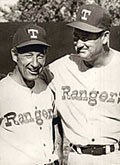 he Post reprinted pictures of spring training in Pompano Beach, Florida. There was Ted Williams and Nellie Fox, sporting the team's new uniforms. Across the chest, "RangerS" replaced the traditional script "Senators." The Post pointed out that the "R" and the "S," at the beginning and end of the lettering, were capitalized at the request of owner Robert Short. Those were his initials.
he Post reprinted pictures of spring training in Pompano Beach, Florida. There was Ted Williams and Nellie Fox, sporting the team's new uniforms. Across the chest, "RangerS" replaced the traditional script "Senators." The Post pointed out that the "R" and the "S," at the beginning and end of the lettering, were capitalized at the request of owner Robert Short. Those were his initials.
It was a long 34 years. Oh sure, we almost got the Padres in 1972 when Giant Food owner Joe Danzansky agreed to the purchase the team, but the Padres owner sold out to local businessman and McDonalds CEO Ray Crock. And that was that. And that was the last time that the city was seriously considered for a team until two seasons ago.
Today, the Jose Vidro roams the infield where Bernie Allen once stood. Jose Guillen sees the same sights as did Lee Maye and Chuck Hinton. Dick Bosman looked as  sharp in his "curly 'W'" cap as does John Patterson. Baseball is back in Washington.
sharp in his "curly 'W'" cap as does John Patterson. Baseball is back in Washington.
How much have we forgotten the past 34 years? Enough that a slew of bloggers [including me at times] enjoys finding fault with the team and its management. Instead of embracing Cristian Guzman and all of his imperfections [and his imperfections are countless], we trash him, the stadium, the general manager, the owner [oops, not the owner ... sorry] and the trainer. I love the Nationals. I am thankful for the stadium that they play in. Each trade that Jim Bowden screws up is a trade that we didn't have to talk about since 1971.
I don't care about the stupid trades or the insanity of the D.C. City  Council or Bud Selig's inability to see the damage he's causing his cause. To me, it's all a play on a stage, acted out for our benefit.
Council or Bud Selig's inability to see the damage he's causing his cause. To me, it's all a play on a stage, acted out for our benefit.
It'll all come together, a stadium will be built, the team will grow and become better. Soon, not next year, or perhaps even the next, but soon, the Nationals will become a franchise that will be studied and written about. The next years will be dissected and studied. Others will try to emulate the moves made by the team, but they won't be able to copy it.
Magic can't be copied. It's a gift. Just like baseball in Washington. For the second year in a row, the Nationals are my favorite Christmas gift.
Tomko Signing: Nationals Win, Dodgers Lose
 [December 22nd] --"The Los Angeles Dodgers and Brett Tomko have agreed to terms on a two-year, $8.7 million contract that includes a club option for a third year and a $1 million buyout." - L.A. Times
[December 22nd] --"The Los Angeles Dodgers and Brett Tomko have agreed to terms on a two-year, $8.7 million contract that includes a club option for a third year and a $1 million buyout." - L.A. Times
Using my barely adequate math skills (that almost kept me out of college), I'm figuring that Mr. Tomko is going to earn nearly $4.5 million per year. Because the Dodgers will almost certainly not want to pick up his option for the third year, the $1 million buyout clause brings his contract value to almost $5 million per season. Tomko went 8-15, 4.48 last year, and had his best season nine years ago. That was also his first season. Since then, he's barely been able to hold his own against major league hitting.
I was very upset with Bowden a few days ago when it seemed he couldn't even sign a bottom-of-the-barrel pitcher like Tomko. I WAS WRONG. Bowden was being fiscally responsible, unwilling to tie the team's future to a contract eerily similar to Cristian Guzman's.
Way to go, Jimbo. You're not off the hook for that whole "Soriano" thing just yet, but at least I no longer entertain thoughts of using tar and feathers in a very immature inappropriate way.
Ryan Church: Always On The Bubble
 [December 22nd] -- Ryan Church must turn his eyes upward, as if to search out the great arbiter in the sky and ask, "Why me?"
[December 22nd] -- Ryan Church must turn his eyes upward, as if to search out the great arbiter in the sky and ask, "Why me?"
For the third time in twelve months, his employer has tried to get rid of him. In a mid-season summer trade, he was to be the player sent to the Colorado Rockies in exchange for throw-away outfielder Preston Wilson. It was Zach Day that eventually received that honor. At the baseball winter meetings earlier this month, general manager Jim Bowden believed he had an agreement-in-principle to acquire the Diamondbacks' Javier Vasquez in exchange for a carload of Washington players ledby Ryan Church. When team officials returned to the meeting to finalize the deal, the Arizona folks were suddenly "frosty." No trade. Now, Bill Ladson, the beat writer for the team's "official" website, projected a 2006 starting lineup that was sans Church. Ladson believes he will be the team's 4th outfielder, with speedster Brandon Watson getting the nod in left field.
Excuse me, but didn't Church do a credible job last year for the Nationals?
Although playing hurt for most of the second half of the season, Church nonetheless hit .287-9-42, with a good .353 on-base-percent and a solid .466 slugging average. Had he stayed healthy and played every day, his numbers would have looked something like this: .287-20-85 with 30 doubles. Church's projected 140 strikeouts doesn't look particularly great, but remember, this was his first real season in the big leagues. Church deserves to play everyday. He his .277 against right-handers in 2005 and .367 against lefties, .301 on the road and .277 at home, .282 during day games and .291 when playing at night. Church is steady and contributes regardless of when or where he plays, and who he plays against.
Church is considered by many scouts to be another Grady Sizemore, a former Expo traded to Cleveland during the terror reign of Omar Miniya. In 2005, Sizemore batted .292-22-81 for the Indians. Sizemore's splits are comparable to Church's. The Indians love Sizemore, and are attempting to sign him to a multi-year contract. Church is trade bait.
It's not Ryan Church's fault that the team hasn't had a real leadoff hitter for several seasons. If Bill Ladson truly has the ear of the Nationals management, as many assert, the team is wanting to play an unproven player in left field in the hopes he'll produce over a player who has already proven his ability so that the Nats don't have to trade for a leadoff hitter. Did you get that? Well, Jimbo, what happens if you finally succeed in trading Church and open the 2006 season with Watson in left, and he gets off to a 3 for 33 start? Then what? There are no other options for the outfield.
The Nationals would love nothing more than to have Grady Sizemore back in the team's outfield next season. But they have his clone begging to remain with the team right now. If both players get 500 at bats in 2006, their offensive numbers would be almost identical. No, trading Church isn't the answer. Look somewhere else Jim. He's not the answer.
Nationals Looking For Useable Frames On Cutting Room Floor
 [Dec. 21st] - It's time for me to stop the whining. Sure, the team lost Junior Spivey and Rick Short as non-tendered free agents. But you've got to figure that if the Nationals lost two players who could have helped the team in 2006, there might be some other teams in that same predicament. Fifty players weren't tendered by the midnight Tuesday deadline, and there are several players with the potential to contribute to a very troubled Washington franchise. Of those fifty, there are nine that are intriguing. I'm not suggesting that they would fit the team as constructed, or that they are necessarily better than who the Nats have now. But they could help:
[Dec. 21st] - It's time for me to stop the whining. Sure, the team lost Junior Spivey and Rick Short as non-tendered free agents. But you've got to figure that if the Nationals lost two players who could have helped the team in 2006, there might be some other teams in that same predicament. Fifty players weren't tendered by the midnight Tuesday deadline, and there are several players with the potential to contribute to a very troubled Washington franchise. Of those fifty, there are nine that are intriguing. I'm not suggesting that they would fit the team as constructed, or that they are necessarily better than who the Nats have now. But they could help:
Byrnes has proven he is a capable everyday player. He had a disastrous 2005 season (.231-10-35) but that might have to do with the fact that he was traded twice, playing for Oakland, Colorado and Baltimore. He got the chance to play everyday in 2004, and did well, batting .283-20-73. He's a Pete Rose type (type, not talent - he does everything 110%), a great two-strikes hitter and eats lefties for lunch. He's got a great glove and even greater speed. The 29 year old is a "fan favorite" type of player, and with the loss of Rick Short, the team really, really needs one.
The Red Sox hoped that Miller would become a "non-tendered" steal after the Astros turned their back on their former ace two seasons ago. Didn't happen. The 29 year old pitched "ok" for Boston, going 4-4, 4.95 last season. He had shoulder surgery during the season and won't be ready until late in 2006, perhaps even 2007. The Sox aren't the type of team with a "wait and see" attitude and quickly jettisoned him. He was great with the Astros, going 16-8, 3.40 in 2001, 15-4, 3.28 in '02 and 14-13, 4.13 in 2003. Miller has a 95 mph fastball and a 90 mph slider. He's dominating when healthy.
The Royals have been waiting for years for Harvey to "turn the corner" and become a complete player. He still may, but not in Kansas City. A torn Achilles tendon doomed his 2005 season (.222-1-5) and will miss half of the 2006 season. But Harvey is a former all-star, and at 27, is still young. If he remains healthy, his MLB history indicates Harvey is a .285-22-90 type of player. He has two things in common with current Nationals' first-sacker Nick Johnson: he gets hurt a lot and doesn't have a lot of power for being a big, burly guy. Harvey is an average first baseman.
Franklin, 32, has shown he has talent, but not enough to remain with the Mariners. He went 8-15, 5.10 in 2005. He had a breakout season in '03 (11-13, 3.57) but was AWOL in 2004, going only 4-16, 4.90. He could shore up the back of the rotation if needed. He has a lot of pitches, but none of them are "plus." His velocity is only average, but he has good control and can be counted on to pitch 200 innings. Don't count on Franklin becoming a different pitcher in Washington. Safeco Field is everybit as much a pitchers park as RFK.
He is one of those guys who makes you wonder how he wins all those games with such a high ERA. He went 9-11, 5.36 with the Reds last season, and has a career 68-60 record with 4.72 ERA. Ortiz has a 95 mph fastball, but it's as straight as Donny Osmond. Ortiz is one of baseball's high ERA pitchers with a winners mentality that could succeed at RFK. Part of his problem is his height (just a tinch under six-feet) -- he isn't throwing down towards the batter (like Randy Johnson or John Patterson) which makes his ball even easier to hit.
 JASON PHILLIPS - C/INF: Phillips came out of nowhere in2003, batting .298-11-58 for the Mets, but then left just as quickly. He his .218 in '04 and .238 last season (.238-10-55 with the Dodgers). The Dodgers tried to trade Phillips before non-tendering him, but no one wanted him. When Phillips slumps, he slumps. He's got a good eye and doesn't strike out very much. He's an above average catcher but while he can play first and third, he isn't very good at it.
JASON PHILLIPS - C/INF: Phillips came out of nowhere in2003, batting .298-11-58 for the Mets, but then left just as quickly. He his .218 in '04 and .238 last season (.238-10-55 with the Dodgers). The Dodgers tried to trade Phillips before non-tendering him, but no one wanted him. When Phillips slumps, he slumps. He's got a good eye and doesn't strike out very much. He's an above average catcher but while he can play first and third, he isn't very good at it.
This is one interesting story. While with the Brewers, Kolb saved 60 games in 2003 and 2004. Tabbed as the heir apparent to John Smoltz in Atlanta, he wilted under the pressure of playing for a real team (3-8, 5.93). He was traded back to Milwaukee for Wes Obermeuller (both of whom were un-tendered). Kolb has a fastball that sinks, making him a perfect designated "double-play" guy out of the bullpen. He's not a strikeout pitcher, though. Don't count on him to come in and whiff two guys to get out of an inning. NOTE: I'd like him to join the Nationals so the team could have two Dan Kolb's on the team one day [the other one is a pitcher for the Potomac Nationals]
The 29 year old tried to forget his 2005 season (6-11, 5.05), but the Pirates wouldn't. But he's a good pitcher. Well, decent pitcher. He went 33-30, 4.59 in his previous three years with the Pirates. Every one of Fogg's pitches are major league quality, but just barely. When your heater tops out at 87 mph, you have to have pin-point accuracy. When Fogg is accurate, he wins. When he doesn't he gets shelled. In that respect, Fogg reminds me of Ryan Drese.
This is one weird duck in one weird situation. He was considered a 'can't miss' prospect with Tampa, but he's never pitched up to his reputation. He's gotten into some fights with management over his roller-coaster majors to the minors to the majors to the minors ride. Although his stats don't reflect it, Brazelton believes he's earned the right to stay in the bigs. The 25 year old has a career 8-23, 5.98 ERA record. It should be better. He has a 94+ mph fastball and a curve and change up that have embarrassed many veterans. He doesn't have a third pitch though, and that might force him to the bullpen pretty soon. He was traded for Sean Burroughs just a couple of weeks ago.
As an aside, our old pal Endy Chavez was non-tendered by the Phillies. It's been so easy to take a swipe at Jim Bowden the past couple of weeks that we tend to forget his trade of Chavez to Philadelphia that brought Marlon Byrd to D.C. Byrd has turned into a solid 4th outfielder, and, according to Bowden, could now hit 20 homers and drive in 80 RBI's as an everyday player.
There are a few names on this list that could really help the Nationals. If the team can sign Eric Byrnes, they could probably count on a .270-17-70 season with stellar defense, good enough to package Ryan Church in a trade for pitching. I really like Josh Fogg and believe he could do very well at RFK. He went 1-6 at tiny PNC Park in 2005, and 5-5 on the road.
The non-tendered gods tooketh, and now it's time for them to giveth. The team is saving almost $3 million by pushing Junior Spivey out the door, and that money (and a tad more) could probably land Josh Fogg and Ryan Franklin.
Sometimes, you can really find bargains in the bargain basement.
Say Goodbye To Spivey, Escobar & Short
 [December 21] - It's too bad that the Boston Red Sox chose to non-tender Jim Bowden.
[December 21] - It's too bad that the Boston Red Sox chose to non-tender Jim Bowden.
At midnight Tuesday, the Washington Nationals non-tendered Junior Spivey, Alex Escobar and Rick Short, making them all free agents.
Short has already agreed to play in Japan. The 32 year old, who has hit and hit and hit everywhere he's played, finally got a chance to play in the major leagues this past season and batted .400 with a couple of home runs. Just wasn't good enough, I guess.
The acquisition of Alex Escobar was one of Jim Bowden's first moves as the team's new general manger. He traded prospect Jerry Owens to the White Sox for Escobar, who had failed to hit at the major league level with three different teams during his career. Owens was named to the Southern League all-star team in 2005, batting .331 with 2 homers and 52 RBI's, stealing 38 bases. He had an excellent .393 on base percentage and played well in the outfield. He's ticketed to begin 2006 at the 'AAA' level, although the White Sox have already indicated they will give him the opportunity to replace the departed Aaron Rowand in the outfield.
Junior Spivey is considered by most scouts as one of the 30 best second baseman in the major leagues. A former all-star, the Nationals gave up Tomo Ohka [he of the "I think I'll turn my back on Frank when he comes out to relieve me" fame] who won 11 games in 2005 with Milwaukee and has averaged 10 wins per season over his career.
What's going on around here????
Rick Short was a great story, a good player, but not a difference maker for the Nationals. Jerry Owens, however, may be a starting outfielder for the White Sox in 2006, and  Tomo Ohka will probably lope to the mound every 5th day for the BrewCrew and win another 10-12 games as their #5 starter.
Tomo Ohka will probably lope to the mound every 5th day for the BrewCrew and win another 10-12 games as their #5 starter.
And the Nats? The Nationals will have nothing to show for it.
The team will probably sign someone else's non-tender castoff to be their #5 starter, someone like Ryan Franklin who won 8 games and "sported" a 5.14 ERA with the Mariners. And in perhaps the most ironic moment in the Nationals' young history, it's already being reported that Junior Spivey will be signed by the Texas Rangers to play second base, replacing Alfonso Soriano, who wants to play second for the Nationals but can't, and won't play the outfield but should.
I-yi-yi-yi-yi.
It Gets Curiouser And Curiouser
 [December 20th] -- I'm just not sure who to blame for this fiasco.
[December 20th] -- I'm just not sure who to blame for this fiasco.
The AP is reporting that Alfonso Soriano has taken his threat not to play the outfield one step further. He's now saying that he's only going to play for the Nationals for the 2006 season and then return to the American League as an unrestricted free agent. His "comfort level" resides in the American League, or so he says, and he doesn't want to learn a new league.
I guess it's too difficult for him.
He reiterated his position yet again: "I don't want to change," Soriano said Monday night at a dinner held for major league players by Dominican Republic President Leonel Fernandez. "If I haven't done it before, I won't do it now."
Soriano's latest refusal to change positions comes only a few hours after Nomar Garicaparra, a five-time all star, waxed poetic about his love of baseball, eagerly embracing a move to first base to help the Dodgers win their division. Speaking at his press conference in Los Angeles yesterday afternoon, he said, "I'm happy to do it. Last season, I went to Dusty [Baker] and offered to play a different position to cover for an injured teammate. I was playing there that very night. It's the job of a player to do whatever it takes to help his team. That's just who I am."
And then there is Alfonso Soriano, who is the antithesis of Nomar Garciaparra.
Soriano has damaged the Washington Nationals both coming and going. Placing his needs before that of the team, he has steadfastly refused to make a position switch, worrying that having to learn a new position would harm his offensive production and lessen his value on the open market next fall. He even took a dig at the Nationals, saying, "I wouldn't change positions for the Rangers and I wouldn't change positions for the New York Yankees. Why would I do it for the Washington Nationals?"
So now, [or so it seems], half of the Nationals' roster is filled with second baseman. Jose Vidro can't play anywhere else and Alfonso Soriano won't play anywhere else. A few days ago, Jim Bowden could have eased Soriano down the road, getting real value [a pitcher?] for him. Now he screams from the upper deck that 1] he's not returning to the Nationals and 2] he won't play in the National League a fter this season. Bowden can do one of two things at this point. He can force Soriano to remain with the team to spite him [oh yeah, that'll work] or trade him now before things get worse. Let's see. What are the team's options. Hmmm. Well, every National League team knows that there is no chance of re-signing him next year and they're not going to spend $10 million for Soriano to be only a one-year wonder, and the American League teams will offer far below market value for the grumpy infielder because the Nationals are screwed and there is nothing else the team can do.
fter this season. Bowden can do one of two things at this point. He can force Soriano to remain with the team to spite him [oh yeah, that'll work] or trade him now before things get worse. Let's see. What are the team's options. Hmmm. Well, every National League team knows that there is no chance of re-signing him next year and they're not going to spend $10 million for Soriano to be only a one-year wonder, and the American League teams will offer far below market value for the grumpy infielder because the Nationals are screwed and there is nothing else the team can do.
So, whose the biggest horses pitutti in this deal? Is it Alfonso Sorinano, whose personality and self-importance makes Jose Guillen look like Dale Murphy? Or perhaps it's Jim Bowden, who suffers from the Tony-Fernandez syndrome, an affliction whereby baseball general managers believe that if they did it once, they can do it again.
Bowden gets my vote. The first thing that crossed my mind when I heard the trade was "Gee, we've already got a second baseman. Maybe he's going to play the outfield. He refused to switch positions two seasons ago -- I wonder if he's going to do it here? Yeah. He will. Bowden wouldn't have pulled the trigger if he hadn't checked first." Of course, he didn't. "I got Tony Fernandez to switch positions, so I'll darn well get Soriano to" [my words, his idea].
Bowden replaced a player who struck out a lot with a player who strikes out a lot. He replaced a player with one of the best on base percentages with a player with one of the worst. He replaced a player willing to do anything for his team with a player out for himself. Then, just for good measure, Bowden threw in a second [potentially] starting outfielder and a young arm. Oh, the wasn't exactly golden, but it was bright and shiny and fast.
Most Nationals' fans could have told Jim Bowden that Alfonso Soriano wasn't exactly a team player. That initial rush of "wow" was immediately followed by a louder, and more ominous "uh-oh" when we heard of the trade. We knew that Soriano was a two-dimensional player; why didn't Bowden? Some believe that, failing to pull the trigger on a trade that would help the team, he simply "pulled the trigger" on a trade. Any trade.
Sometime between now and the start of spring training, there will be a press-release from the office of general manager Jim Bowden that goes something like this: The Washington Nationals announce that Alfonso Soriano has been traded to the [insert team here] for pitchers ------ ------ and ----- -------. Nationals general manager Jim Bowden said that "We traded for Alfonso Soriano for the express purpose of trading him again for the pitching help the teams so desperately needed. I apologize for the subterfuge regarding my wanting him to play the outfield. It was just part of the process."
I have been a supporter of Jim Bowden since the acquisition of Cristian Guzman. No one could have anticipated what happened, and I predict that the Nats' shortstop will rebound in 2006. But anyone could have predicted the fallout of the Soriano fiasco. When the team is finally sold, and all of the stadium issues are finally put to rest, when the new owners have the time to evaluate the team's management structure, Bowden will be fired. Oh, they'll say the right things, that they greatly appreciate Jim Bowden's stewardship and energy, that he helped make the transition to Washington a smooth one, but he was being replaced because, after all, the job was only temporary.
Don't believe it. Bowden's going to get canned because he didn't foresee the fallout from this trade, because the Nationals traded two quality outfielders and a young arm, and will likely realize a return on their investment of only the bodies they receive in trade when Soriano finally goes away. And I am fearful that they'll be just that: only bodies.
Sometimes, trades don't go well in spite of the hard work and research that went into them. Those we can live with. Other times, trades don't go well because there was little hard work and absolutely no research. Those we can't live with. And Neither will Bowden.
Not for much longer, anyway.
Halt Or We'll Lose!
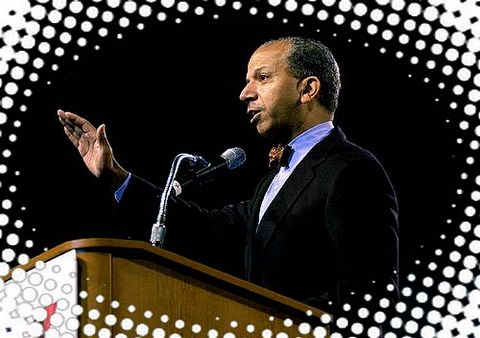 [December 19th] -- The Washington Post is reporting that D.C. mayor Anthony Williams has asked the city council to remove the stadium vote from tomorrow night's agenda. Member Linda Cropp agreed, and says that the vote won't occur any earlier than January 3rd. It might be much later, weeks or even months down the road.
[December 19th] -- The Washington Post is reporting that D.C. mayor Anthony Williams has asked the city council to remove the stadium vote from tomorrow night's agenda. Member Linda Cropp agreed, and says that the vote won't occur any earlier than January 3rd. It might be much later, weeks or even months down the road.
Although no reason was given, it doesn't take much imagination to figure out what's going on: Williams doesn't have enough "yes" votes to pass the stadium agreement.
Don't sweat it. It's not a big deal.
There is no way that the city council would allow this measure to fail. No stadium agreement means no owner. No owner means that Bud Selig and Major League Baseball still controls the team, and could on a whim and a "fixed" vote by its fellow owners move the team again. Knowing this, the city council would never allow their beloved Washington to lose a third baseball franchise. The repercussions would be enormous. No, it won't happen.
How does this effect the Nationals for the upcoming season? It doesn't. The payroll has already been set and spent. The team isn't good enough to contend and won't need extra dollars to swing a last-minute trade this year. With both Jim Bowden and Frank Robinson returning, the team is on auto-pilot and really won't need an owner until the last day of the season, when plans must begin for next season's free agent signing period. The team doesn't want a repeat of last month, when no free agent was willing to sign with the ownerless Nationals.
Bob DuPuy, resident hard-nose for Major League Baseball, wrote in a letter to the city council that the two sides were at a "crossroads" in their relationship. He [rightfully] spelled out that baseball has not only adhered to the stadium agreement, but allowed it to be modified to benefit the city. No more shenanigans, he says. DuPuy even hinted that the team's future in D.C. is very cloudy without the agreement being finalized NOW. If the council doesn't approve the lease by December 31st, the whole deal becomes null and void, and would likely head to arbitration.
This isn't a fight between the North and the South, or democracy and communism. It's more like Saddam fighting Osama. Neither side is loveable and both sides can't be trusted.
I say let them fight. We'll give them another nine months or so before sweating the stadium situation. And when all is said and done, it'll get done. It has to. It's meant to be.
Bill Ladson: Blogger Lightning Rod
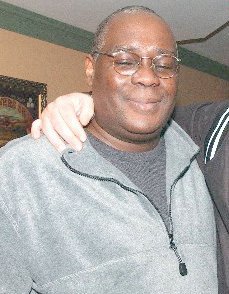 [December 19th] -- Up until a few years ago, I never bothered checking any of the "official sites" of major league baseball. They were nothing more than house-organs, written by guys, it seemed, that were given a list of "do's and don'ts" by the big clubs. Then came the change. Much of the website content was "fire-walled" from the teams, giving the writers at least a modicum of journalistic independence. Of course I don't think they are totally unbiased, but then I wouldn't expect them to be. After all, they are employees of Major League Baseball.
[December 19th] -- Up until a few years ago, I never bothered checking any of the "official sites" of major league baseball. They were nothing more than house-organs, written by guys, it seemed, that were given a list of "do's and don'ts" by the big clubs. Then came the change. Much of the website content was "fire-walled" from the teams, giving the writers at least a modicum of journalistic independence. Of course I don't think they are totally unbiased, but then I wouldn't expect them to be. After all, they are employees of Major League Baseball.
I've always thought that Nationals scribe Bill Ladson has remained pretty independent, and hasn't "towed the line" to any great extent. Sure, there have been instances where Ladson parroted the team's reasons and justifications, but overall, I think he does a pretty good job.
Several of my fellow bloggers, however, disagree. The guy gets pummeled for his efforts. His weekly "Mailbag" column gets the most guff. Many don't like the questions he chooses for publication. Some call them "stupid." Gee, I don't know. Maybe most of us Nats' fans are stupid and that's the best we can do. More likely though, Ladson chooses submissions that reflect what he hears when he goes out into public.
He's not perfect. But I like him.
In this weeks mailbag, Geoff from Greenville asked Ladson what he thought the Nationals' starting lineup might look like in 2006. This is the team that he thinks will take the field next April:
Ladson's lineup is pretty much as expected, that is of course, if you expect Alfonso Soriano to be willing to play in the outfield anytime in the near future. There is one glaring omission, however: Ryan Church. Ladson believes that Ryan Church, who batted .287-9-42 for the Nats last season, will either be a 4th outfielder [very unlikely] or be traded for a starting pitcher [likely if Watson makes the team]. Extrapolate Church's 2005 injury shorted season to 500 at bats, and he would have hit something like .287-20-85, give or take. That's an awful lot of power to be trading away. However, if Watson can hit at the major league level anywhere near what he did last year with New Orleans [.355, 31 sb], Church could be expendable. He'll likely mature into a Grady Sizemore type hitter, another Expos /Nationals outfielder who was traded for pitching three seasons ago.
If if if. If Brandon Watson can play at this level, then Ladson's lineup is a good one. If he can't, the team will be weakened by Church's absence in the outfield. The fact that Bowden offered Church to the Diamondbacks for Javier Vasquez earlier this month may indicate that Watson might be "the man" in left in 2006.
I doubt if Jim Bowden will make any moves until spring training. No way he trades Church until he's certain that Watson is the real deal.



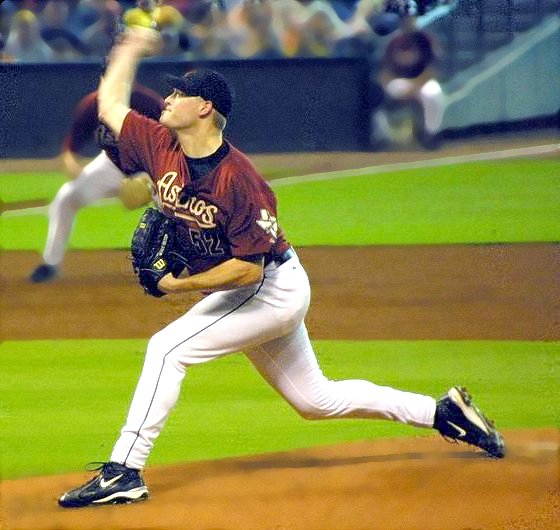
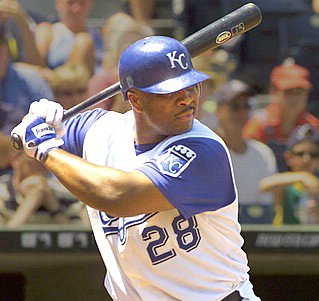
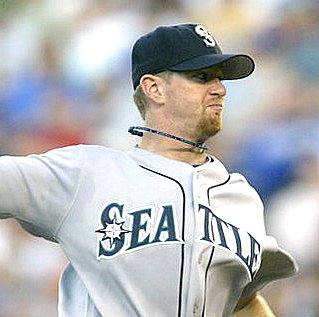

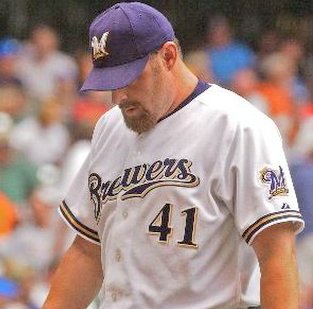

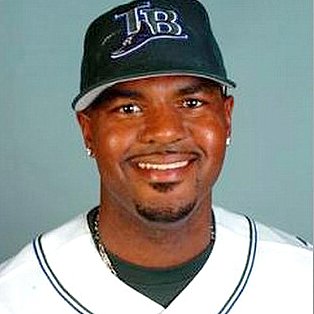
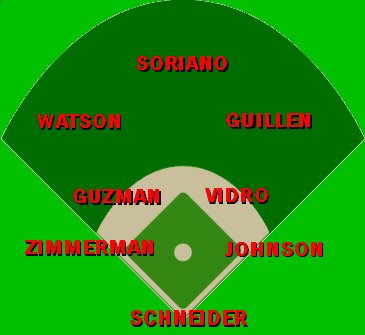






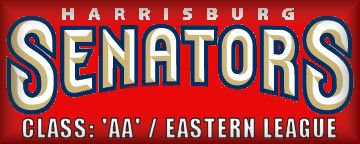
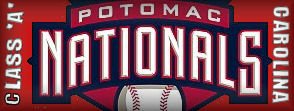

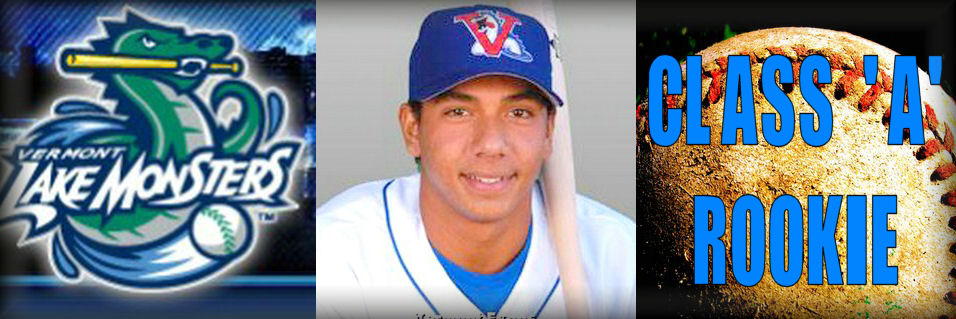











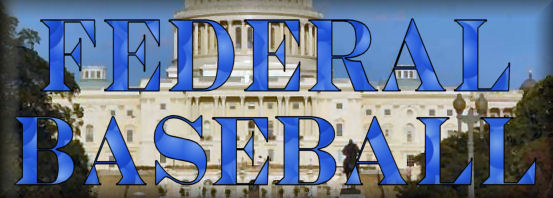



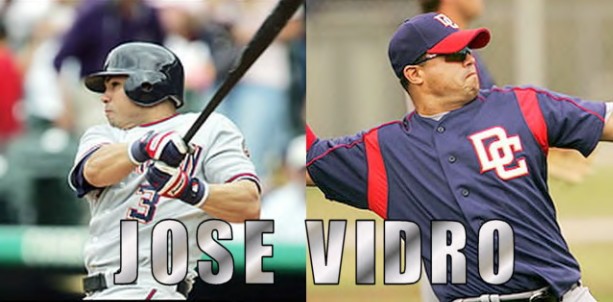




















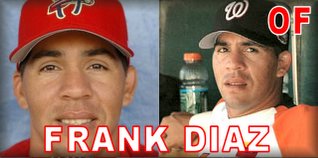

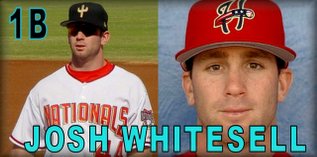
 3) 1926 (road) --- 4) 1936-'37, 1948-'51
3) 1926 (road) --- 4) 1936-'37, 1948-'51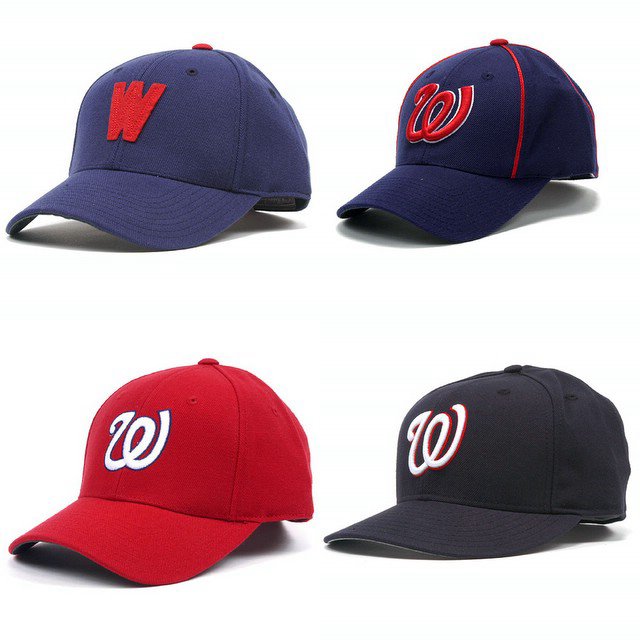 3) 1968 - '71, and 2005 (home) --- 4) 2005 (road)
3) 1968 - '71, and 2005 (home) --- 4) 2005 (road) Buddy Meyer --- Walter Johnson
Buddy Meyer --- Walter Johnson Ed Yost --- Muddy Ruel
Ed Yost --- Muddy Ruel Roger Peckinpaugh --- Joe Cronin
Roger Peckinpaugh --- Joe Cronin Del Unser --- Darold Knowles
Del Unser --- Darold Knowles Ed Stroud - Mike Epstein
Ed Stroud - Mike Epstein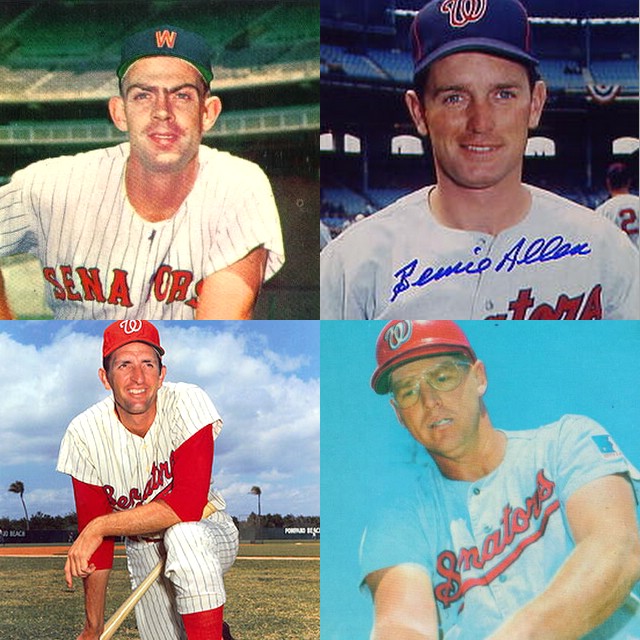 3)1968 -- 4)1969 - 1971
3)1968 -- 4)1969 - 1971